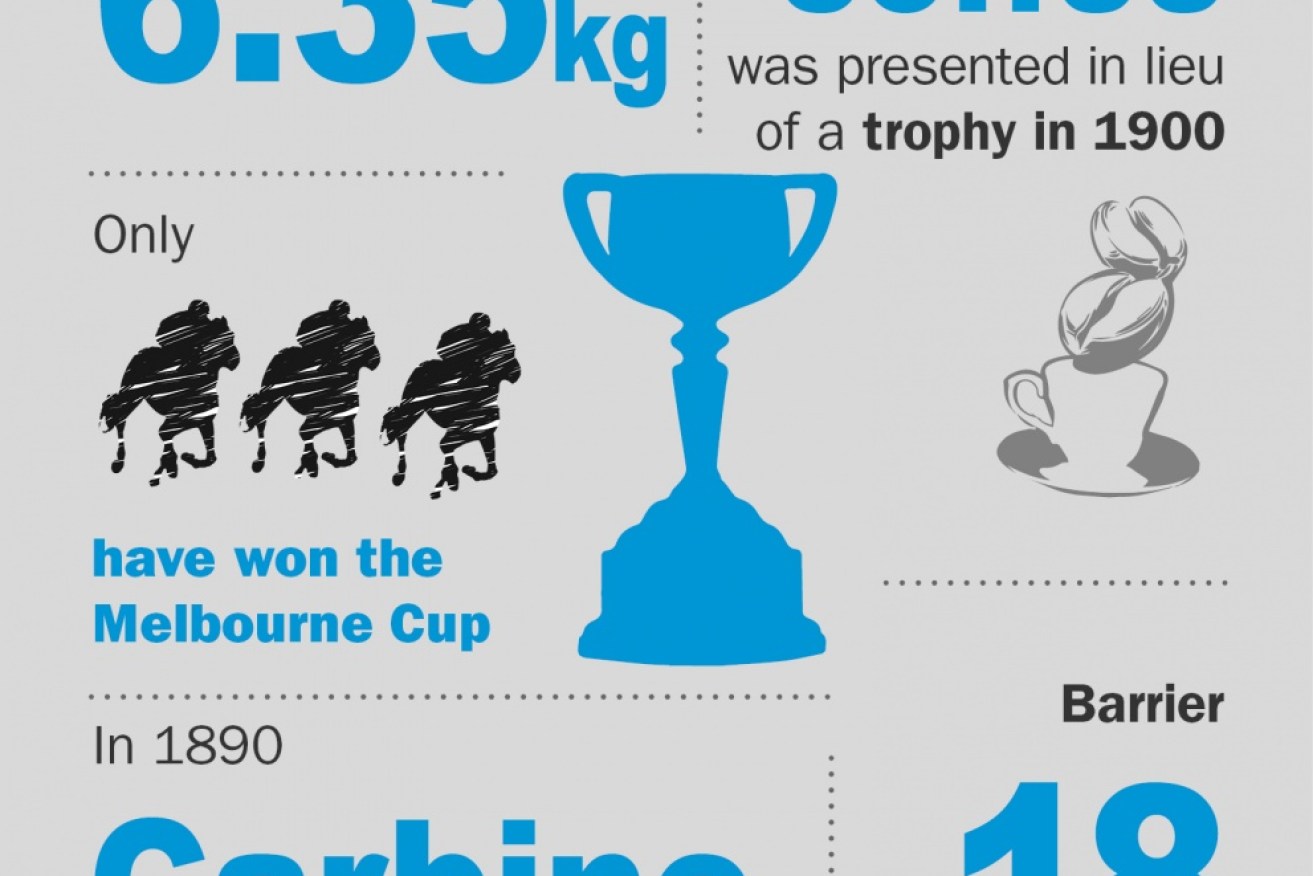Nine things you didn’t know about the Melbourne Cup


Australia is a sport-loving country, but there’s something particularly climactic about the Melbourne Cup.
The richest two-mile handicap in the world has captivated the nation since 1861 – so much so that Victorians happily enjoy the whole day off in preparation.
Whatever the Cup means to you, these facts may add another dimension to our most famous race.
• Jockeys: 10 things you didn’t know
• Australia’s most dangerous job?
• How you’re wasting your pay cheque
No horse has ever won the Melbourne Cup from barrier 18.
Stalls were introduced at the 1924 Melbourne Cup, and there’s been a spooky curse on barrier 18 ever since. Last year, Sea Moon hoped to break the curse – until it was scratched. Meanwhile, barriers 9 and 12 have each had four wins in the past 11 years.
The largest ever field was 39 runners in 1890.
Meanwhile, the smallest starting field was seven in 1963. We’ve come a long way in terms of safety standards at the Cup. These days, only 24 starters line up, because that’s quite enough half-tonne beasts to be galloping at 64 km/h.
Only three black horses have ever won the Cup.
Choosing a horse by its colour might not be as silly as you think. ‘Bay’ coloured horses have taken 45 per cent of Cup wins, while grey horses have had a rough run, winning just six Cups.
World War I and II stopped most major sport in Australia, but never the Melbourne Cup.
During the war years, more than a third of Australia’s men enlisted in the war, leaving sporting arenas desolate. The Cup prevailed, but was run on a Saturday between 1942–44 (perhaps taking a weekday off seemed too decadent).
Champion horse Phar Lap’s heart weighed 6.35 kilograms – more than twice the weight of the average racehorse.
Phar Lap captured the hearts of Australians during our Great Depression. Despite finishing last in his first race, Phar Lap rallied like a champ, and was the third-highest stake-winning horse when he died suddenly in 1932. Some still believe American gangsters poisoned him.
In 1890, Carbine carried 66 kilograms to win his Melbourne Cup – 24 kilograms more than second place.
Carbine breaking through 39 runners to win with the heaviest weight ever is a record that will never be broken (due to new weight restrictions). Affectionately known as ‘Old Jack’, Carbine was the people’s favourite, winning 76 per cent of his starts.
In 1900, due to the hard economic times, a simple tea and coffee service was presented in lieu of a trophy.
It was a frugal year for the Cup, thanks to the economic depression of the time – and people complained. In comparison, 1908’s opulent trophy was much-ridiculed for featuring horses that looked more like greyhounds.
There has never been a dead heat for first place, but Topical and Gaine Carrington (1933) and Lahar and Zazabelle (1999) have tied for third.
The photo finish was first used in 1948, when Rimire was declared victor over Marne. It was later found that the camera was misaligned, but the result was never changed.
Last year’s Melbourne Cup featured a rare pair of father-and-son jockeys.
In the 2014 Cup, Glyn Schofield rode French hope Au Revoir while son Chad rode Mr O’Ceirin. It’s the first time a father and son duo have galloped side by side since George and Gary Moore 50 years ago. Glyn placed eighth while Chad was last in 21st place.
This content was sponsored by LUCRF Super, proud supporters of the National Jockeys Trust. For more information, go to lucrf.com.au.
L.U.C.R.F Pty Ltd ABN 18 005 502 090 AFSL 258481 as Trustee for Labour Union Co-Operative Retirement Fund (LUCRF Super) ABN 26 382 680 883.
